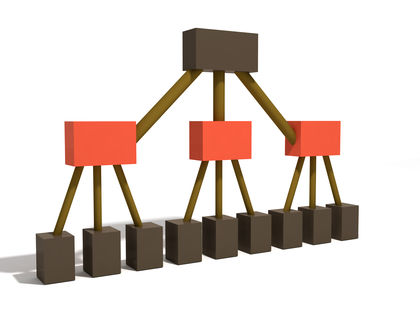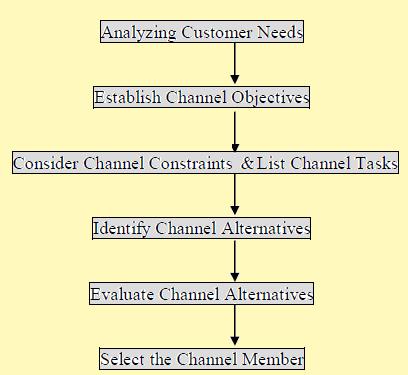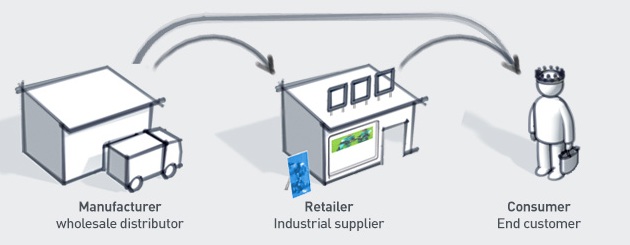Logistics is a military term that refers to the management of various activities like transportation, inventory, warehousing right from the stage of processing the raw materials by the manufacturer to convert it into finished goods till they are made available to the customer for use. While logistics management helps to optimize the flow of material within the organization, supply chain management crosses the boundaries of organization extending material flow integration upwards to suppliers and also descending down to customers. Logistics basically represents two primary product movements, (i) Physical supply, concerned with supply of raw materials, component parts, and other related supplies necessary for the manufacturing process. This comes under the purchase function (Materials Management) and (ii) Physical distribution, concerned with delivering the finished product to customers and the middlemen. This comes under the marketing management that is also called as Marketing Logistics. Marketing logistics is the process of delivering the Continue reading
Industrial Marketing Concepts
Industrial Distribution Channel Management
Channel designing is resorted to by the industrial marketer when he has to develop either a new channel system or modify an existing one. As channel design and management is a difficult and an incessant task, an industrial marketer has to go through certain stages that are involved in designing a superlative channel system. The various steps that are involved in channel design process are analyzing needs of the customer, establishing channel objectives, considering channel constraints, listing channel tasks, identifying channel alternatives, evaluating alternate channels and selecting the intermediaries. The industrial marketer also has to take appropriate decisions on industrial distribution channel management by selecting the right intermediaries based on the various steps. The intermediaries need to be continuously motivated by means of offering them various benefits and facilities. Any conflicts arising between the intermediaries due to various reasons need to be solved by the industrial marketer. Finally, the entire Continue reading
Industrial Distribution Channel Design
It is very important that a distribution channel is properly aligned to satisfy the needs of channel members and also for the success of any industrial marketing strategy. A good industrial channel creates the communication and physical supply linkages with existing and potential customers. Channel designing in industrial markets is a dynamic process that consists of either developing the new channels or modifying the existing ones. Designing an appropriate industrial distribution channel and managing it is a tough and continuing task. A well designed channel structure helps to achieve the desired marketing objectives. A channel structure consists of types and number of middlemen, terms and conditions of channel members, number of channels. The various steps that are involved in industrial distribution channel design in industrial markets are given in the following figure. Let us understand each of the stages of industrial distribution channel design process in detail: 1. Analyzing the Continue reading
Industrial Distribution Channel
When a company or a manufacturer produces goods or services, it has the immediate responsibility to distribute and sell them to the industrial and institutional customers. The industrial customers generally constitute of wholesalers, retailers, manufacturers, educational institutions, governments, hospitals, public utilities, and other formal organizations. There are various intermediaries who are involved in a distribution and selling process helping the manufacturers to make their goods reach the end users. Thus, a network or channel that helps to flow the goods from the producer to the consumer through a set of interdependent organizations (intermediaries) is called distribution channel or trade channel or marketing channel. Channels are the tools used by management to move the goods from the place of production to the place of consumption. In the progression, the title of goods gets transferred from sellers to buyers. Industrial distribution is unique as there are several different methods of channeling the Continue reading
Uses of Industrial Advertising
Rarely is advertising employed by itself in the industrial arena. The complexity of most industrial products, coupled with buyers’ expectations and unique information needs, requires personal contact. It is not possible, however, for sales people to make contact with all the various individuals who may be involved in a purchasing decision. In fact, studies have indicated that on the average for every ten buying influencers, salesperson reaches only three to four. Not only is industrial advertising an effective means of reaching inaccessible or unknown buying influencers, it creates awareness, enhances the effectiveness of the sales call, increases the overall efficiency of the selling effort, and is an important ingredient in creating and maintaining demand at the distributor level. Reaching Buying Influences: It is not uncommon for industrial sales people to be unaware of individuals within a firm who may be in a position to exert influence on a purchasing decision. Continue reading
Medias used in Industrial Advertising
While some industrial advertisers use traditional consumer media when they serve their advertising objectives, their choices generally center on whether to use print media (business magazines, trade publications, and industrial directions), direct marketing (direct mail, telemarketing, catalogs, and data sheets), or some combination thereof. General Business and Trade Publications General business and trade publications are classified as either horizontal or vertical. Horizontal publications deal with specific functions, tasks, or technologies and cut across industry lines. Vertical publications are directed toward a specific industry and may be read by almost anyone from the person on the assembly line to the company president. The choice of one or the other, or both, is dictated by the desire to penetrate a particular industry, reach common influencers across industries, or optimize the goals of reach and frequency. General business publications (e.g., Fortune, Business Week, and The Wall Street Journal) tend to be read by Continue reading



